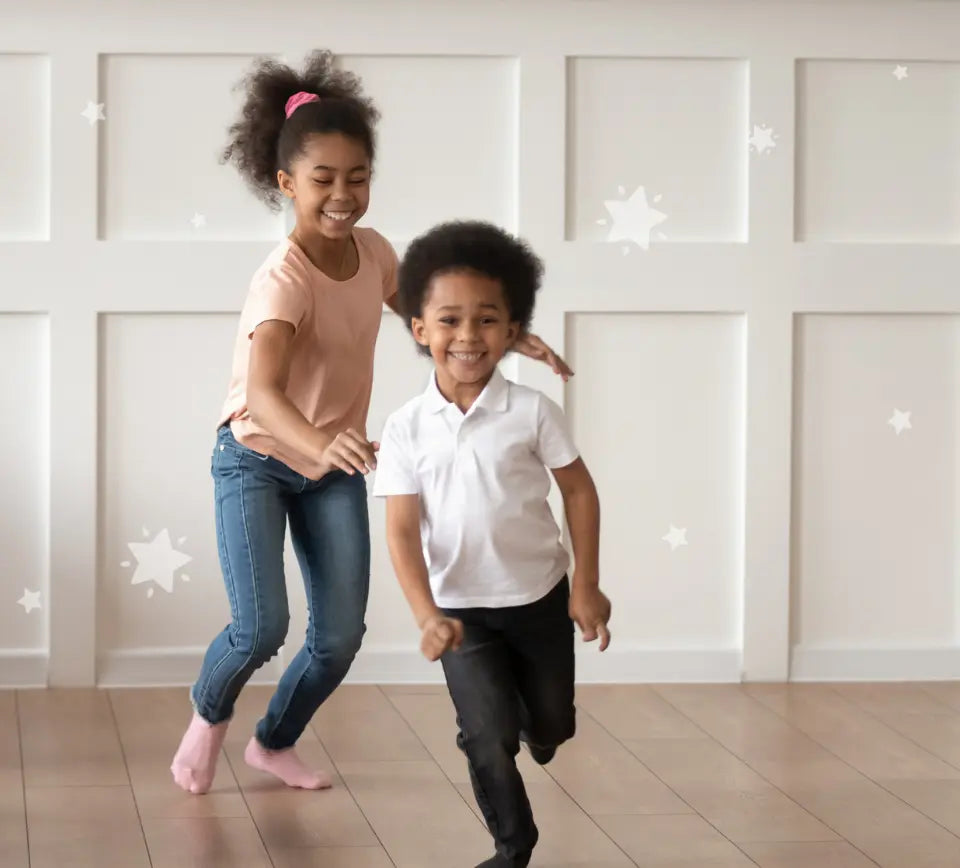What are Gross Motor Skills?
As your child grows up, they develop skills in several different areas including language, social, cognitive, and motor.1 Gross motor skills are movements that use the body’s large muscles.1 Unlike fine motor skills, which use the small muscles in the hands and fingers, gross motor skills include bigger movements such as walking, standing, keeping balance, and sitting.1 Children may develop skills at different speeds, so it is ok if your child is behind in some skills and ahead in others.1 If you have concerns about your child’s development, talk to your doctor or your child’s paediatrician.
What Gross Motor Skills Should My Preschooler Have?
Children develop new gross motor skills as they get older. After three months, most babies are able to control their head and neck movements while sitting and stretch out their legs.3 Toddlers that are three years-old are usually able to walk up and down the stairs, jump in place, and throw a ball over their heads.1 Preschoolers who are four years-old can hop and stand on one foot for up to four seconds, kick a ball forwards, or catch a bouncing ball.1
Gross motor skills can be challenging for young children if they lack practice or experience.2 By creating opportunities to improve your child’s gross motor skills, you can help encourage their skills to improve.
Activities to Help Improve Your Preschooler’s Gross Motor Skills
When planning to improve your preschooler’s gross motor skills, it’s important that you go at their pace. Teaching a child who is not ready or unwilling to learn a skill can be very difficult.2 It’s also good to be consistent and repetitive when practicing these tasks and to praise efforts rather than results.2 Your child is doing their best and acknowledging their efforts can boost morale.
Some activities for improving gross motor skills include:
Certain Chores
While doing chores may not be your preschooler’s idea of fun, many chores require bilateral integration, or using both sides of the body together.2 Bilateral integration is an important foundation for a child’s development and introduces the concept of effective two-handed coordination. Some chores that use both sides of the body together include washing the dishes, dusting, wiping, and raking the leaves outside.2
Fun Activities
Since chores aren’t always very fun, you and your preschooler can take a break from chores to do fun activities that use bilateral integration such as pillow fights and rolling out play dough.2 You can also play Simon Says to allow your child to have fun while learning to use both sides of their body.2
Exercises
Trying fun exercises with your child can not only give them the opportunity to use both sides of their body, but can also help them work on their core stability.2 Core stability will help your child have better hand and foot function.2 Jumping on a trampoline and climbing on playground equipment are two fun ways to strengthen your preschooler’s core.2 You can also do bilateral integration exercises such as windmills, jumping jacks, and wall squats with your child to encourage them.2
After a long day of games and exercises to improve gross motor skills, your preschooler deserves a nice, healthy snack to satisfy their tummy. Serve up their favorite snacks along a nutritional drink for kids to support their brain development nutritionally.
1. https://caringforkids.cps.ca/handouts/behavior-and-development/your_childs_development





